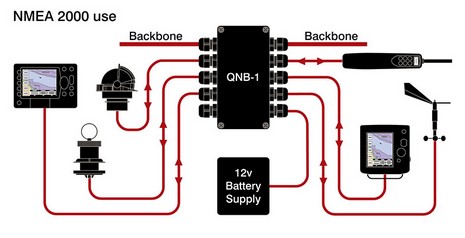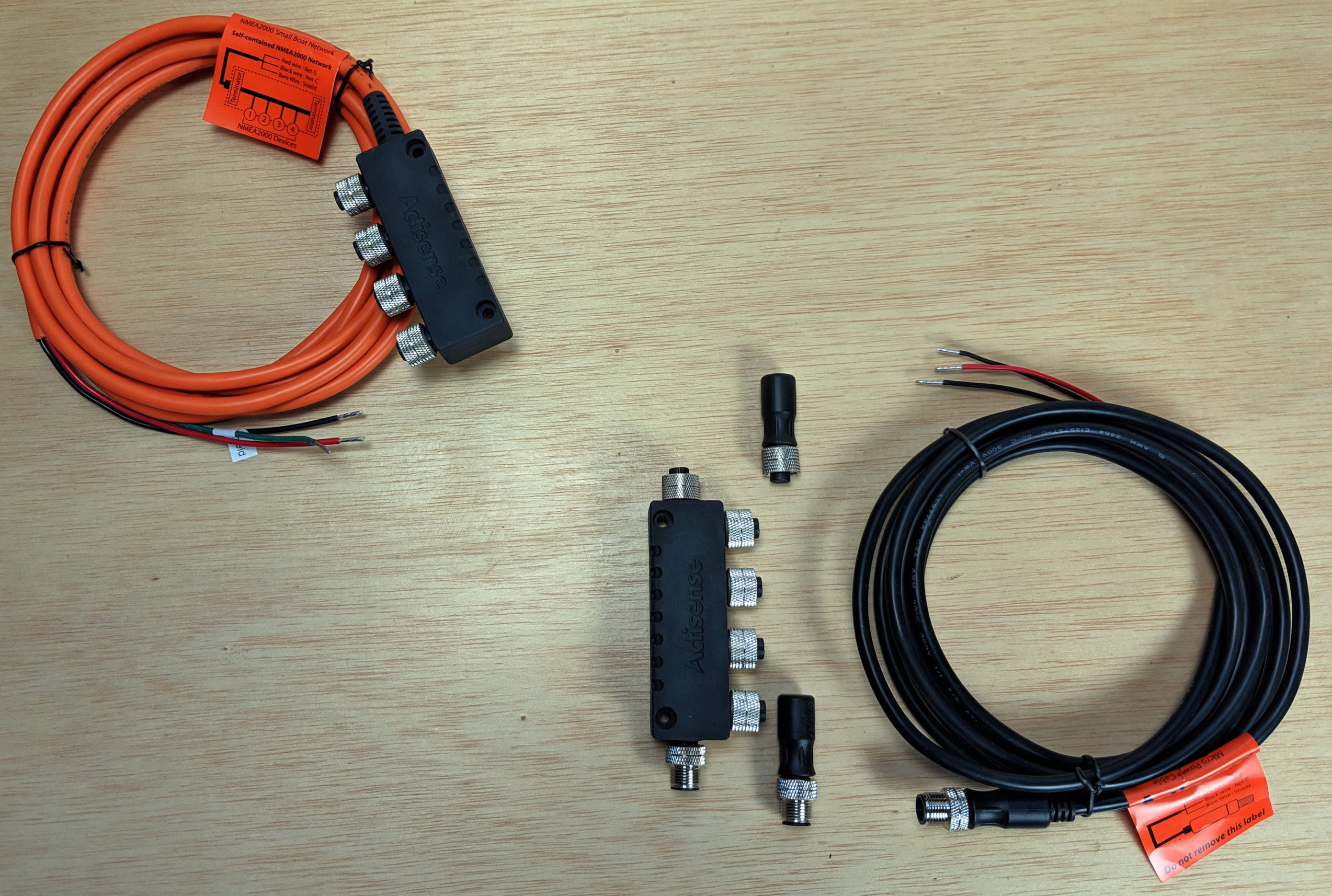Actisense QNB-1, N2K breakout box

Ah, yet another doodad useful for installing a NMEA 2000 network, an economical one too. If used to the max, Actisense’s brand new QNB-1 “Quick Network Block” takes the place of 6 regular N2K tee connectors, 8 cable connectors, and a separate power supply (like most of this). Plus all the N2K cable ends run into it can be run through smaller holes and tighter spaces than even those skinny SimNet connectors, and they can be cut to fit perfectly. And I don’t see why it can’t be used with proprietary flavors of N2K cable too (the possible exception being SimNet because it lacks a distinct “shield” wire). The QNB-1 even includes 4 amp blade fuses for each side of the backbone, and LEDs that indicate power on/off/reversed and data activity, and it will retail for about about $146 (available in the U.S. from Gemeco).
It can also be used to connect multiple NMEA 0183 listeners, though I don’t think it’s as versatile in this regard as a PAS-Thru Box. At any rate, I’ll bet the QNB-1 will even be used in places where six tees aren’t needed or that don’t make sense for the power supply (which should sit around the center of loads, especially in larger systems where voltage drop is an issue that has to be calculated). Now I must say that I didn’t even know that NMEA 2000 breakout boxes were possible until Furuno previewed its similar unit last fall. But Actisense—which, by the way, claims to be the world’s largest manufacturer of NMEA multiplexers—says that the QNB-1 incorporates the “the NMEA ‘Barrier-Strip’ method as outlined in the NMEA 2000 specification”. There are those who still say that connections like this violate N2K standards, so I asked NMEA about it; but they were non committal, saying that no such breakout boxes have been submitted for certification. But do they need to be? And who actually cares if the likes of Furuno and Actisense stand behind them? I bet installers will use them; happily, I suspect.














Just used the box. Wonderful in many ways but one oops.
Grommet spec is for 10mm diameter cable max. Mini backbone is 12mm. Despite the thickness of the line implying a mini backbone – that install (which we made with peeling back the cable sleeve) is not so clean as to be desireable. QNB-2?
Actisense folks are very responsive. Already looking to offer larger grommets for mini backbone!!
You commented that the actisense box may not work for the simnet cables since they don’t have a shield wire. I am using the box as the main connection behind the helm between a standard devicenet (maretron) cable and a simrad autopilot with no issues just ignoring the lack of a shield wire. There are two simnet drops, to the AP24 control head and to the FC42 rate compass. Neither shows issues without the ground wire for the relatively short length of the drop (not the main bus). Note that the AC12 autopilot computer hooks wires to the simnet connection with no connection of the shield either. Seems like significant overkill to get an adapter for each interface unless there are significant emi issues. Do you think this is risky?
I really don’t know, Drew. I’ve used SimNet cable in the QNB too, without problem, but I know the ActiSense folks are leery about it. Just because it works for us in our given electrical environments doesn’t mean it will work flawlessly elsewhere.
Very disapointed with Actisense and their NMEA 2000 to NMEA 0183 converter
They have been promising this “next month” for nearly 2 years now !
GET ON WITH IT AND RELEASE IT GUYS SO I CAN USE IT!
I understand that different electrical environments may be an issue. I guess the alternative if necessary would be to try to kludge a drain wire to the simnet shield or alternatively lop off the simnet cables close to the device and run the devicenet cable properly shielded as much as possible. BTW, the AP24 has a nice simnet status display that shows load and any parity errors. It is a nice advantage for those of us without a real breakout box to a pc. I haven’t found a similar capability in my NavNet3D MFD yet. It identifies the topology and devices it sees on the devicenet but I haven’t seen transmission stats.
Those screw grommets are have a standard thread. If one is too small (or too big, in my case) they can easily be replaced with the correct size. Just go down the the electrical section of your local marine store – they are a couple bucks.